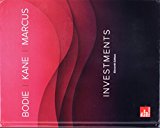
(A)
Adequate information:
| Net Profit - $510 |
| Pretax Profit - $805 |
| EBIT - $830 |
| Sales - $5140 |
| Assets - $3100 |
| Equity - $2200 |
To identify and calculate five components that determines Du Pont Formula
Introduction:
In Du-pont system, the
Return on Equity = Net profit Pretax profit EBIT Sales Assets
__________ × __________ × _____ × _____ × _______
Pretax profit EBIT Sales Assets Equity
= Tax burden × Interest burden × Margin × Turnover × Leverage
(B)
Adequate information:
| Net Profit - $510 |
| Pretax Profit - $805 |
| EBIT - $830 |
| Sales - $5140 |
| Assets - $3100 |
| Equity - $2200 |
To calculate Return On Equity(ROE) for 2019 using components of Du Pont Formula.
Introduction:
Return on Equity measures the financial performance of the company by focussing only on the profitability of equity investments. It is expressed as:
Though in Du-pont system, the return on equity is decomposed into five components. Thus decomposed return on equity is calculated as:
(C)
Adequate information:
| Net Profit - $510 |
| Pretax Profit - $805 |
| EBIT - $830 |
| Sales - $5140 |
| Assets - $3100 |
| Equity - $2200 |
| Dividend per share - 0.60 |
| Earnings Per Share(EPS)- $1.96 |
To calculate the firm's sustainable growth rate for 2019 from firm's ROE and plowback ratios.
Introduction:
The sustainable growth is the maximum growth rate that a firm can sustain without having to lookout for outside finance. It is multiple of return on equity and retention ratio. It is calculated as:
Sustainable Growth
Want to see the full answer?
Check out a sample textbook solution
Chapter 19 Solutions
Investments, 11th Edition (exclude Access Card)
- Which of the following represents a source of cash?A) Repayment of a loanB) Purchase of inventoryC) Issuance of new equity sharesD) Purchase of fixed assets Exarrow_forwardThe payback period is:A) The time it takes for a project to be profitableB) The time required to recover the initial investmentC) The total time a project lastsD) The period during which a project generates revenuearrow_forwardA bond selling below its par value is referred to as:A) A discount bondB) A premium bondC) A callable bondD) A convertible bondneed help!arrow_forward
- A bond selling below its par value is referred to as:A) A discount bondB) A premium bondC) A callable bondD) A convertible bondarrow_forwardWhat is the primary purpose of a capital budgeting decision?A) To maximize cash flowsB) To evaluate long-term investment opportunitiesC) To manage short-term liabilitiesD) To determine the company's dividend policyneed helparrow_forwardWhat is the primary purpose of a capital budgeting decision?A) To maximize cash flowsB) To evaluate long-term investment opportunitiesC) To manage short-term liabilitiesD) To determine the company's dividend policyarrow_forward
- What is diversification in portfolio management?A) Investing in a single industry to maximize returnsB) Spreading investments across different assets to reduce riskC) Concentrating investments in a high-performing stockD) Avoiding low-risk investments entirelyarrow_forwardWhat is the primary purpose of a capital budgeting decision?A) To maximize cash flowsB) To evaluate long-term investment opportunitiesC) To manage short-term liabilitiesD) To determine the company's dividend policy explain.arrow_forwardQuestion 10: What is the primary purpose of a capital budgeting decision?A) To maximize cash flowsB) To evaluate long-term investment opportunitiesC) To manage short-term liabilitiesD) To determine the company's dividend policyarrow_forward
- Nitai (age 40) contributes 10 percent of his $100,000 annual salary to a Roth 401(k) account sponsored by his employer, AY Incorporated. AY Incorporated matches employee contributions dollar-for-dollar up to 10 percent of the employee's salary. However, AY matches by contributing to the employee's traditional 401(k) account because the employer contributions are not fully vested to the employee at the time of the contribution. Nitai expects to earn a 7 percent before-tax rate of return. Assume he leaves the contributions in the Roth 401(k) and traditional 401(k) accounts until he retires in 25 years and that he makes no additional contributions to either account. What are Nitai's after-tax proceeds from the Roth 401(k) and traditional 401(k) accounts after he receives the distributions, assuming his marginal tax rate at retirement is 30 percent? (Use Table 1, Table 2.) after tax proceeds from distribution roth ira: traditional ira:arrow_forwardJackson and Ashley Turner (both 45 years old) are married and want to contribute to a Roth IRA for Ashley. For the current year, their AGI is $235,000. Jackson and Ashley each earned half of the income. Note: Leave no answers blank. Enter zero if applicable. c. Assume that Ashley earned all of the couple's income and that she contributed the maximum amount she is allowed to contribute to a Roth IRA. What amount can be contributed to Jackson's Roth IRA if they file a joint return?arrow_forwardif blurr image please comment i will write values. please dont Solve with incorrect values otherwise unhelpful.arrow_forward
 Pfin (with Mindtap, 1 Term Printed Access Card) (...FinanceISBN:9780357033609Author:Randall Billingsley, Lawrence J. Gitman, Michael D. JoehnkPublisher:Cengage LearningPrinciples of Accounting Volume 1AccountingISBN:9781947172685Author:OpenStaxPublisher:OpenStax College
Pfin (with Mindtap, 1 Term Printed Access Card) (...FinanceISBN:9780357033609Author:Randall Billingsley, Lawrence J. Gitman, Michael D. JoehnkPublisher:Cengage LearningPrinciples of Accounting Volume 1AccountingISBN:9781947172685Author:OpenStaxPublisher:OpenStax College Intermediate Financial Management (MindTap Course...FinanceISBN:9781337395083Author:Eugene F. Brigham, Phillip R. DavesPublisher:Cengage Learning
Intermediate Financial Management (MindTap Course...FinanceISBN:9781337395083Author:Eugene F. Brigham, Phillip R. DavesPublisher:Cengage Learning



